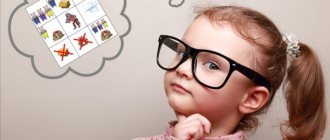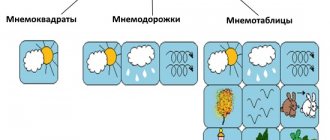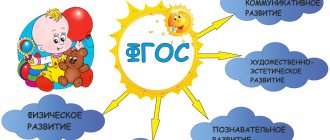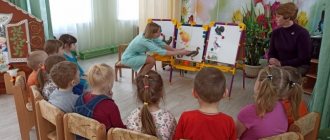History can name many interesting people with phenomenal memories. The great commander Alexander the Great knew the name of each of his 30,000 soldiers. And Mozart, having heard a piece of music only once, could immediately restore it to the exact note. It is reliably known that they managed to develop such unique abilities thanks to a special memorization technique, some techniques of which have survived to this day. Today, parents, teachers and speech therapists willingly use mnemonic tables - unusual aids in pictures - to develop the memory and speech of preschoolers.
What is the secret of using them
Remember the well-known children's alphabet: next to the image of the letter there is always a bright picture. And this is not just a colorful illustration decorating a boring book page. This is a teaching technique borrowed from the so-called mnemonics (or mnemonics) - an interesting and simple memorization mechanism. It is believed that it appeared in the 6th century BC. e., and was named after the ancient Greek goddess Mnemosyne, the patroness of memory. The essence of the method is that:
- Information is attached to visual images, emotions, sounds and even smells.
- At the same time, signals from several analyzers simultaneously enter the human brain: auditory, visual, tactile.
- They combine to create complex neural connections, which facilitates the process of remembering, storing and reproducing information.
- It is enough for a person to remember one of the images of an associative series, and the brain will reproduce all the others associated with it.
The most popular means of this technique are mnemonic tables - aids for the development of long-term memory and coherent speech. They are words, individual phrases or entire text, encrypted in symbols or pictures, which are kind of clues that help you remember and reproduce the text using an associative series.
This method is considered especially effective for young children, whose memory is characterized as visual-figurative, and memorization is involuntary. This means that information based on the child’s life experience or vivid and specific images is better absorbed. It’s not for nothing that the great teacher K.D. Ushinsky said that remembering five incomprehensible words is torment for a child. But if you connect twenty of these words with pictures, he will learn everything on the fly. In addition, the use of mnemonic tables during classes develops:
- attention,
- perseverance,
- keen interest in learning,
- imagination,
- logical thinking,
- fine motor skills,
- ability to perform analysis and synthesis operations.
The mnemonics method has proven its effectiveness over time and continues to develop based on the latest knowledge about the functioning of human memory mechanisms.
Exercises for preschoolers
Preschool age is considered a favorable period for laying the foundations of competent, clear, beautiful speech. Mnemonics for beginners (simple, fun tasks, games) will help your child’s speech develop faster. It is useful for the development of the articulatory apparatus to perform tasks using onomatopoeic words. They correct diction well - pure jokes (“If only there was smoke coming out of the chimney”), nursery rhymes, phrases containing a certain group of sounds (“Sanya’s sleigh rides on its own”).
Exercises on the pronunciation of hissing sounds can be combined thematically.
After looking at the picture “Hedgehog and Hedgehogs,” the adult offers to complete a number of tasks. The child must clearly pronounce phrases with the sounds “sh” and “zh”. “Sha-sha-sha - we walk slowly; shu-shu-shu - I’ll give the baby a raspberry; shi-shi-shi - where the kids walk.” Such exercises help you master question intonation and develop a sense of rhythm.
By isolating the sound while clearly pronouncing a word, the skill of understanding the terminology “sound” and “word” is developed. When working with children, it is necessary to emphasize the development of intonation sense, rate of speech, diction, and strength of voice. Games can help with this.
Exercises for beginners:
- "Whose voice is this ? The goal of the game is for the child to learn to recognize adult animals from young animals by the reproduced sound. For such a game, you can take figurines of a dog and a puppy, a duck and a duckling, a cat and a kitten. Alternatively, you can sculpt animals from plasticine or use cards. The plot of the game: animals come to visit the baby, they want to play with him. Children should understand the difference between how a mother cat meows and how her baby meows.
- Game "Compare the cubes" . The task is to teach the child to correlate objects with different characteristics. An adult offers to look at two cubes and tell how they differ. The kid takes one cube and says that it is big, and the second cube is small. The first cube is red and the second is white. The red cube is plastic, the white cube is made of fabric and is soft inside.
- Game “Compare two kittens” . The child is asked to look at the kittens. One of them is white and large, and the second is black and smaller. You need to say who they are. Come up with names for them so that it is clear that one kitten is black and the other is white. What is the difference.
- Game “What little animals can do . The goal of the game is to choose verbs that denote the characteristic actions of animals. An adult shows pictures of animals, and the child must say what they can do or what they say. For example, a cat loves mice. She loves to meow. The dog loves to bark and eat bones, run and jump. The cockerel crows and loves to peck grains.
- Game "Profession" . Here you will need cards that depict people of different professions (pilot, hairdresser, doctor, cook). An adult asks who heals people. The kid must answer correctly. This is how the remaining cards are played.
- The game “Wizards” helps expand vocabulary, develops long-term memory and logical thinking. You will need cards with images of individual objects - a table, an apple, a door. The adult names several words, and the child must choose those cards that will help him remember the named words. He kind of “bewitches” them into these cards. Then the baby takes the cards and with their help remembers the named words. The game is aimed at understanding the logical connections between objects.
Regular playful activities help to awaken interest in words. The exercises prepare children for further independent compilation of narratives, stories, texts, and form connected speech.
Rules for conducting classes
Supporters of early development argue that it is possible to introduce a child to mnemonics as early as 2-3 years, as soon as he has accumulated some vocabulary. Wherein:
- Classes should not last more than 15 minutes. Even in this short period it is worth including physical education or considering a change in the type of activity. After all, due to age characteristics, preschoolers can work concentratedly for only 8–10 minutes, and then their attention wanders.
- The leading activity for children is play, so the activity should not be turned into a strict academic lesson. The baby will better perceive information if it is presented in the form of an exciting, fun adventure.
- Mnemonics includes a lot of techniques and methods, but due to age-related characteristics of perception, the most accessible for children is croquing - the use of visual aids: diagrams, drawings, sketches, tables or collages.
- Regardless of the child’s age, we begin training with the simplest tasks, gradually complicating them.
- Drawings or diagrams must be large, clear and always in color, otherwise the baby will simply not be interested. Only in the preparatory group can children be offered black and white support diagrams.
- The table should not contain more than 9 squares. It is difficult for a preschooler to remember and reproduce a large amount of information due to fatigue.
- To ensure that all the knowledge settles down in memory and does not get mixed up and turn into “porridge,” do not give your child more than 2 mnemonic tables during one lesson.
- Constantly change the topics of texts - this better develops memory and enriches vocabulary.
Be sure to take into account the child’s desire and mood. Under no circumstances force him to use force. If you feel that your baby is bored, take a short break, and then try again to interest the baby by changing the topic. Hitting, shouting, calling names and humiliating children is strictly prohibited.
Mnemonics for speech development
Speech, as is known, is almost completely formed by the age of 5. By this age, the baby should already pronounce all sounds correctly, construct phrases correctly, have sufficient vocabulary to communicate with others and clearly express his thoughts. Children's speech should be lively, emotional and spontaneous.
It is important to understand that such skills do not appear on their own. This is the result of a long and painstaking collaboration of children, parents, pediatricians and teachers of preschool educational institutions. To develop speech, they use various methodological techniques, the most effective of which is teaching speaking based on mnemonic tables.
In the younger group
This includes children 3–4 years old. They already have some vocabulary: the active vocabulary is normally between 1500 and 2000 words. But the physiological imperfection of the speech apparatus does not yet allow children to pronounce all sounds phonetically correctly: sonorant (r, l) or hissing (sh, ts or s) sounds are especially difficult. Children rearrange syllables and make speech and grammatical errors. They are almost completely unable to combine several sentences into a coherent story. But they have a great desire for speech development, continuously repeating syllables and words after adults, absorbing new knowledge like a sponge. At this moment, it is important not to waste time and start working with the children using special aids - mnemonic squares:
- At the initial stage, we use clear and bright single pictures, clearly stating the name of the depicted object: “Look, kids, this is a tree.” Then we pronounce the word syllable by syllable and invite the children to repeat it out loud several times. Thus, relying on visualization, we expand our vocabulary, develop phonemic awareness and teach correct pronunciation. You can consolidate the acquired knowledge with the help of the game “Tell me a word”: adults show a picture and ask children to remember its name.
- The next step is the formation of the baby’s vocabulary by becoming familiar with the characteristics of objects. Now we correlate not individual words with the picture, but their combinations: the tree is tall, branchy, green.
- Next, we introduce children to verbs and teach them to compose elementary sentences: a tree grows, makes noise, and becomes covered with leaves.
- When the children get used to it a little and begin to understand the principle of working with mnemonic squares, we gradually move from specific pictures to symbols. For example, this is how you can schematically depict a tree or rain:
Experts recommend matching the image of an object with its symbol in the minds of children using the game “Find the Pair.”
In the middle group
A 4-5 year old child’s vocabulary is noticeably expanding: now he has about 3,000 lexical units in his arsenal. The baby understands and can explain the meaning of many words. He develops coherent speech skills. Now the baby not only retells what he heard, but also expresses his thoughts, reasoning and objections. It's time to consolidate and develop new speech skills by introducing the baby to a mnemonic track, which consists of 3-4 mnemonic squares united by a common meaning. Based on such clarity, you can compose a sentence or a short text of 3-4 simple phrases. Using this guide:
- We expand the baby’s vocabulary, enriching it with different parts of speech;
- We make it easier to remember the sequence of actions.
- We teach how to build coherent, competent sentences.
For example:
Mashenka // took the basket // and went into the forest // to pick mushrooms.
You need to start working with the mnemonic track by examining each individual image that is part of it. For example: Who is this?
Where does the mouse live? (In the mink).
What does he like to eat? (Cheese).
Who is he afraid of? (Cats).
After the preparatory work, we combine all the images into a mnemonic track.
The result was a short story: “This is a mouse. She lives in a hole. The mouse loves to eat cheese. She's afraid of the cat." First, it is pronounced by an adult, emphasizing the connection of each phrase with a separate picture. Then the children take the floor.
At the next stage, we complicate the task by replacing specific images with symbols. For example, how to describe your favorite toy using the following mnemonic track?
Children should understand that each icon here corresponds to a separate category of description:
- what is the name of the toy;
- its color;
- form;
- size;
- why do you love her?
If the child is lost and cannot immediately find the right words, we give an additional hint by “breaking down” each sign into separate categories.
The result is a short description: “My favorite toy is a ball. It is red with a blue stripe, round in shape. The ball is small. He's fun to play with."
If the lesson takes place in a preschool educational institution, then the teacher must remember that he needs to pay attention to each child and give him the opportunity to speak out. You should definitely praise your child, even if everything didn’t work out the first time.
In the senior and preparatory group
In children aged 5–7 years, speech development is already at a fairly high level. The baby pronounces sounds correctly, does not make mistakes in placing accents, and has a fairly rich vocabulary. The baby not only names the object and its characteristics, but also gives it a description, and also expresses his attitude. Children's speech becomes expressive, intonationally and emotionally colored. The child’s thinking is already so developed that he can easily identify the essential features of objects, build logical chains, analyze and draw conclusions. Therefore, it’s time to move on to using mnemonic tables:
- unlike tracks, the information squares in them are not arranged linearly, but in several rows, each of which marks the beginning of a new sentence or paragraph;
- the number of mnemonic squares included in the table – from 4 to 9;
- Information texts, riddles, fairy tales, and poems can be encrypted here.
For children 5–7 years old, you need to use manuals made up of pictures and symbols:
- Teaching a specific algorithm of action. For example, we dress a doll for a walk or teach children how to wash their hands correctly.
- Aimed at memorizing poems or information.
- Developing the ability to tell different stories or characterize objects or events.
Autumn
Coloring individual elements of the table or participating in their compilation makes memorizing information even more effective, and small movements of the hands contribute to the development of speech.
Retelling fairy tales
Russian folk tales almost always have a lot of characters who appear in a certain sequence. How can a little person who has not yet learned to read and write remember them? And here mnemonic tables come to the rescue again:
- We read a fairy tale aloud.
- Let's look at the images in the table.
- We perform “recoding” by deciphering the symbols. Thus, sharp teeth symbolize the wolf, geometric shapes symbolize the roof of the mansion and the new spacious house that the animals built.
- We invite children to retell the story using symbols.
- The next step is coloring the elements or restoring the entire table from memory.
The pictures of the main characters and their actions serve as great clues. All you have to do is choose the right words and formulate the sentences correctly - and your baby will turn into a professional storyteller.
Pros and cons of mnemonics
Mnemonics are actively used in teaching children. For example, one of the most famous phrases for studying the sequence in the color spectrum is “Every Hunter Wants to Know Where the Pheasant Sits.” It is she who helps to accurately tell how a rainbow “works.”
The role of methodology in the development of children:
- helps you remember information quickly and for a long time;
- improves memory and attentiveness;
- develops speech, expands vocabulary and horizons, teaches how to pronounce sounds and words correctly;
- forms logical and imaginative thinking;
- improves imagination, intellectual and creative abilities;
- develops character, teaches sociability, helps to overcome isolation and shyness.
When used correctly, mnemonics have very few disadvantages.
- At the initial stage of use, children have a small vocabulary, so it can be difficult for them to work using this method.
- There is no need to abuse the method and use it in cases where it is too easy to understand the properties and remember the signs - this hinders the child’s development.
- Sometimes it is not possible to use the technique. For all-round development, it is necessary to teach the child to learn information mechanically; this skill will also be useful in the future.
The human brain consists of two hemispheres. The left is responsible for logic and speech, and the right helps to perceive different colors and form images using the imagination. When using mnemonic techniques, both halves are activated simultaneously. As a result, thought processes bring maximum benefit in the form of acquired knowledge.
How to teach children to compose texts using a mnemonic table
You should start with the simplest tables, consisting of 4 (2x2) cells, gradually complicating the task and increasing the number of rows. Based on such visualization, children themselves will be able to compose a descriptive story. The training consists of several stages:
- First, we consider and discuss each picture in detail. We ask children leading questions that focus on details: shape, size, color and other characteristics.
- We “recode” the information encrypted in conventional symbols. All children should understand what is being said.
- We propose to compose phrases for each mnemonic square.
- We combine them into a story and say it out loud.
- We remove the table and invite the children to reproduce it graphically from memory.
- Now it’s the kids’ turn to present their version of the story.
For example, you can teach children to describe their favorite time of year using a table like this:
- A good place to start is by taking a closer look at all the images used: “What do you see in the pictures?”
- The second step is decoding the information hidden in the symbols: “What time of year are we talking about? Right. So what could the letter “B” in the first square mean? And what kind of strange people are depicted at the end of the table? Yes, these are girls in blue dresses and boys in orange trousers.”
- Then, together with the children, we make up phrases for each picture: “Spring has come. The snow melted and green grass appeared. Snowdrops bloomed. The birds have arrived. Young leaves bloomed on the trees. Girls and boys are glad to see the warm sun.” The adult says the full version of the story out loud, linking each sentence to a picture.
- We remove the table and invite the children to reconstruct it from memory.
- The next step is test stories, first based on visual aids, and then without it, from memory.
So gradually the tables become larger and the texts more complex. But no matter what topic you touch on, the algorithm for teaching how to write stories will remain the same.
From what age is it used?
Teaching children using mnemonics can begin from a very early age. Getting to know exercises for children starts with simple techniques.
First, they use mnemonic squares, which can be introduced to children at the age of three. In the first lessons, children study simple images that represent one word, phrase or simple phrase. You can place pictures in a square and learn poems with movements.
Later, at 4-5 years old, children become familiar with mnemonic tracks - systematized pictures of four drawings. With the help of such images, the concept of sequences is formed. Thanks to group illustrations, you can easily tell a short story, remember the steps of washing your hands, the process of dressing or washing your face.
Children aged 6-7 years begin to study mnemonic tables that allow them to perform more complex actions:
- retell various works;
- memorize poems and complex words;
- guess and make riddles;
- find rhymes for words;
- invent fairy tales or stories;
- distribute objects into groups according to certain characteristics;
- study numbers;
- become familiar with the basic rules of life safety and behavior in various places, and methods of self-service.
Children learn to express their thoughts correctly and beautifully and use new words in speech. Attention and intelligence develop, the ability to highlight the main thing and compare improves.
An easy technique for learning poems
Children's ability to remember can vary greatly. Some tirelessly quote the voluminous works of Chukovsky and Barto. For others, even a simple quatrain does not want to be remembered. It’s quite easy to help such children - you need to learn poetry with them using mnemonic tables:
- To begin with, we expressively read the work out loud.
- Then a second time, but this time focusing the baby’s attention on the supporting visualization.
- We check our understanding of the meaning by asking questions about the content of the poem.
- We explain unclear points.
- We read line by line, relying on a mnemonic table. The child immediately repeats the phrase, and then the entire text.
In early preschool age, it is useful to memorize so-called chatter poems: short and simple quatrains that are easy to remember and motivate speaking.
In such a table, each line is a separate sentence, complete in meaning:
- I // sewed a shirt // for a bear.
- I // will sew him // some pants.
- It is necessary // to sew a pocket to them,
- And // put some candy.
This way, a boring activity will turn into a funny adventure, and the child will easily remember and recite any poem.
How to make a manual with your own hands
Mnemonics techniques are widely used today by teachers and parents to develop memory, speech, as well as abstract and logical thinking of children during classes in mathematics and the world around them. Ready-made tables, as a means of a popular technique, can be easily purchased at any bookstore. But if you make them with your own hands and involve children in the creative process, the effectiveness of developmental activities will increase significantly. How to create a mnemonic table?
- We re-read and divide the text into parts, focusing on important points.
- Let's draw the table. The number of squares will depend on the volume of text and the age of the child.
- We fix the main semantic accents using exact or conventional images: geometric shapes, silhouettes, signs, pictograms.
- We highlight incomprehensible words, which we subsequently explain to the baby.
The pictures in the table can be drawn by hand, printed or pasted in the form of a collage. In any case, adults must show creative imagination, attention and perseverance in order to develop in preschoolers as many skills and abilities as possible, which are so necessary during the formation of the speech centers of the brain.








